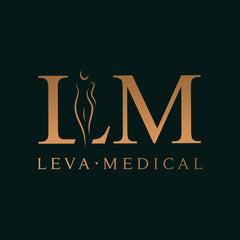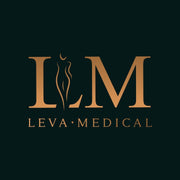Cholesterol & ApoB: Beyond the Standard Lipid Panel
"Prevention is better than cure." - Desiderius Erasmus
As a physician deeply invested in the nuances of heart health and longevity, I recently delved into "Outlive: The Science and Art of Longevity" by Bill Gifford and Peter Attia. A chapter titled "The Ticker" shed light on the complexities of lipids, especially ApoB. Here, I've distilled its key insights, aiming to bridge the knowledge gap for both medical professionals and health enthusiasts.
Key Insights:
- The Vegan Paradox: Even individuals with seemingly healthy lifestyles, like vegans, can be at risk. The case of Anahad, a fit vegetarian with a high calcium score, underscores the importance of comprehensive assessments beyond traditional lipid profiles.
- The Egg Debate: Despite past beliefs linking eggs to high blood cholesterol, nutrition scientist Ancel Keys clarified the relationship between dietary cholesterol and blood cholesterol.
- ApoB's Superiority: ApoB provides a more comprehensive measure of cardiovascular risk compared to traditional cholesterol measurements, capturing the concentration of both LDL and VLDL particles.
- Lp(a) Concerns: Elevated Lp(a) levels in the blood are associated with an increased risk of atherosclerosis, coronary heart disease, and stroke. It's a potent lipoprotein variant that doesn't respond as effectively to lifestyle interventions as LDL-C does.
- Understanding Cholesterol Medications: While statins are commonly prescribed, there are other medications like Bempedoic Acid (Nexletol) and PCSK9 Inhibitors that offer different mechanisms of action and potential benefits. Understanding the nuances of each can help in personalized treatment plans.
- Evolution of Medicine: The transition from Medicine 2.0 to Medicine 3.0 emphasizes a shift in focus from just treatment to identifying and eliminating the primary causative agents in diseases, like apoB in cardiovascular disease.
- Available Laboratory Tests and Exams
The Vegan Paradox:

Adopting plant-based diets, such as veganism and vegetarianism, is often associated with a healthier lifestyle. However, even those who make these conscious dietary choices can face unexpected health challenges. In the book, there's a compelling account of Anahad, who embodies the image of health as a dedicated vegetarian leading an active lifestyle. Yet, in a surprising turn of events, he found out he had a high calcium score. This score is a medical metric that can indicate potential heart disease risks, highlighting that even those who seem to make all the right health choices can still face unexpected challenges.
This revelation underscores that traditional lipid profiles, while insightful, are not the only indicators of heart health. It's a stark reminder that dietary choices, significant as they are, form just a part of the broader health puzzle.
The Egg Debate:

For years, foods like eggs were believed to directly contribute to increased blood cholesterol due to their high cholesterol content. This belief was largely based on research conducted on rabbits, which absorb cholesterol from their food differently than humans. Ancel Keys, a renowned nutrition scientist, clarified this misconception in a 1997 interview, stating, “There’s no connection whatsoever between cholesterol in food and cholesterol in blood. Cholesterol in the diet doesn’t matter unless you happen to be a chicken or a rabbit.”
It took until 2015 for the US government's dietary guidelines to acknowledge that dietary cholesterol is not a concern for overconsumption. This shift in perspective highlights the need to differentiate between dietary cholesterol and the cholesterol produced by our own cells. The majority of the cholesterol in our circulation is, in fact, produced internally, and most of what we consume is excreted.
In conclusion, Anahad's experience emphasizes the importance of a comprehensive approach to heart health. It's a reminder that even those on plant-based diets must remain informed and vigilant about their overall health.
ApoB's Superiority:

Understanding Cholesterol and Its Carriers:
Cholesterol is essential for our body, helping make cell walls, hormones, and bile. However, it doesn't travel alone in our blood. It uses transporters called lipoproteins.
Different Types of Lipoproteins:
| Lipoprotein Type | Produced In | Main Job | Key Features |
|---|---|---|---|
| Chylomicron & Chylomicron Remnants | Intestines | Transport fats from food | Large particles; become remnants after delivering fats |
| VLDL | Liver | Carry fats | Rich in fats, deliver fats to body cells |
| LDL | Liver | Transport cholesterol | Known as "bad" cholesterol; high levels can lead to heart issues |
| Lp(a) | Liver | Carry cholesterol | A special type of LDL; can increase heart disease risk |
| HDL | Liver | Remove excess cholesterol | Known as "good" cholesterol; helps protect the heart |
Zooming in on Apolipoprotein B (ApoB):
ApoB is a protein found in lipoproteins like LDL and VLDL. It has two main forms: ApoB48 and ApoB100.
| ApoB Type | Produced In | Main Job | Found In |
|---|---|---|---|
| ApoB48 | Intestines | Form chylomicrons | Chylomicrons |
| ApoB100 | Liver | Help form LDL and VLDL | VLDL and LDL |
The Importance of ApoB Testing:
Checking for ApoB, especially ApoB100, can tell us more about heart health than just measuring regular cholesterol. It focuses on specific blood particles that can harm the heart. This test helps doctors predict heart-related risks better.
LDL vs. LDL-C: What's the Difference?
LDL is the particle that carries cholesterol in our blood. When we talk about measuring "LDL" in a cholesterol test, we're usually looking at LDL-C, which is the actual cholesterol inside the LDL. Think of LDL as a basket and LDL-C as the items inside it.
Lp(a) Concerns:

Elevated Lp(a) levels in the blood are associated with an increased risk of atherosclerosis, coronary heart disease, and stroke. It's a potent lipoprotein variant that doesn't respond as effectively to lifestyle interventions as LDL-C does. The risks of Lp(a), a potent lipoprotein variant, are significant and can contribute to heart disease.
Understanding Cholesterol Medications

Cholesterol medications are essential tools in the fight against heart disease. While many people are familiar with statins, there are several other types of medications that can help manage cholesterol levels. This guide will help you understand the nuances of each type.
Medication Nuances
While statins, like rosuvastatin (Crestor), are the go-to for many, there are alternatives like Bempedoic Acid (Nexletol) and PCSK9 Inhibitors. Each has its unique mechanism of action and benefits. For instance, PCSK9 Inhibitors can reduce Lp(a) levels by around 30%. Another medication, Ezetimibe, is often used alongside statins but comes with its considerations, such as potential liver enzyme elevation.
Statins Overview:
Statins are a class of drugs that are commonly prescribed to lower cholesterol levels. In addition to other side effects all statins can cause hyperglycemia, which can increase blood sugar levels. They work by inhibiting the enzyme HMG-CoA reductase, which plays a central role in the production of cholesterol in the liver.
Based on the efficacy in lowering LDL-C as mentioned earlier, here's the table ordered from highest to lowest efficacy:
| Statin | Brand Name | Pros | Cons |
|---|---|---|---|
| Rosuvastatin | Crestor | Very potent; Lower muscle-related side effects | Expensive; Drug interactions |
| Atorvastatin | Lipitor | Potent; Available in generic form | Muscle pain; Drug interactions |
| Pitavastatin | Livalo | Less muscle pain; Fewer drug interactions | Newer; Expensive |
| Simvastatin | Zocor | Widely prescribed; Available in generic form | Muscle-related side effects; Drug interactions |
| Pravastatin | Pravachol | Less muscle pain; Fewer drug interactions | Less potent |
| Fluvastatin | Lescol | Extended-release form; Fewer drug interactions | Less potent |
| Lovastatin | Mevacor | Available in generic form; Well-established safety profile | Muscle-related side effects; Drug interactions |
Other Cholesterol Medications
Several other medications can help manage cholesterol. Here's a breakdown. Again the medications are ordered from most potent (PCSK9 Inhibitors) to least potent (Ezetimibe):
| Medication | Brand Name | Mechanism of Action | Indications |
|---|---|---|---|
| PCSK9 Inhibitors | Examples: Repatha, Praluent | Monoclonal antibodies that bind to and inhibit the protein PCSK9, increasing the number of LDL receptors on the liver surface to remove more LDL cholesterol from the blood. | Patients with heterozygous familial hypercholesterolemia or clinical atherosclerotic cardiovascular disease who require additional lowering of LDL cholesterol. |
| Statins | Examples: Crestor, Lipitor, Zocor | Inhibit the enzyme HMG-CoA reductase, which plays a central role in the production of cholesterol in the liver. | Primary and secondary prevention of cardiovascular events in patients with elevated LDL cholesterol levels. |
| Bempedoic Acid | Nexletol | Inhibits ATP citrate lyase, an enzyme involved in the synthesis of cholesterol. | Adults with heterozygous familial hypercholesterolemia or established atherosclerotic cardiovascular disease who require additional lowering of LDL cholesterol. |
| Ezetimibe | Zetia | Inhibits the absorption of cholesterol from the small intestine. | Used alone or in combination with statins to reduce LDL cholesterol levels in patients with primary hyperlipidemia. Also indicated for patients with homozygous familial sitosterolemia. |
PCSK9 Inhibitors vs. Statins:
| Medication Type | Description | Mechanism of Action | Cost | Strength | Indications |
|---|---|---|---|---|---|
| PCSK9 Inhibitors | Advanced cholesterol-lowering medicines distinct from traditional statins. | Interacts with the liver to increase LDL cholesterol removal from the blood. | Up to $6,000/year. | Can reduce cholesterol by up to 60%. | Specific genetic conditions, post heart-related events, intolerance to statins. |
| Statins | Traditional cholesterol-lowering medicines. | Reduces cholesterol production in the liver. | Varies, generally less expensive. | Varies based on the specific statin and dosage. | High cholesterol, prevention of cardiovascular diseases. |
Evolution of Medicine:
The journey from Medicine 2.0 to Medicine 3.0 signifies a profound change in our approach to healthcare. Instead of merely treating symptoms, Medicine 3.0 aims to pinpoint and eradicate the primary agents causing diseases, such as apoB in cardiovascular ailments. While Medicine 2.0 offers preventive measures like medications and tests, Medicine 3.0 delves deeper, targeting the very root of the disease, such as apoB in cardiovascular conditions. This paradigm shift in treatment strategies underscores the importance of addressing the core issue rather than just managing symptoms.
Laboratory Tests and Exams:
Lab Tests:
-
LDL-C (Low-Density Lipoprotein Cholesterol):
- Medicine 2.0: Less than 100 mg/dL (milligrams per deciliter) for the general population.
- High-risk individuals: Less than 70 mg/dL.
- Medicine 3.0: The author believes even 70 mg/dL is too high and suggests aiming for 10 to 20 mg/dL.
-
apoB (Apolipoprotein B):
- Normal values for apoB can vary, but lower values are generally considered better for cardiovascular health.
-
Lp(a) (Lipoprotein(a)):
- Ideally, Lp(a) levels should be less than 30 mg/dL to minimize cardiovascular risk.
-
Triglycerides:
- Normal: Less than 150 mg/dL.
- Borderline High: 150-199 mg/dL.
- High: 200-499 mg/dL.
- Very High: 500 mg/dL or more.
Imaging Test Information:
-
Calcium Scan:
- What it is: An imaging test for the arteries.
- Purpose: Detects early heart disease signs by spotting artery calcification.
-
Results:
- Positive score = presence of calcified plaques.
- Indicates past and current arterial damage.
- Normal vs. Abnormal:
- A score of 0 indicates no detectable calcified plaque. This is considered ideal and suggests a low risk of CAD.
- A score between 1 and 100 suggests mild plaque buildup.
A score between 101 and 400 indicates moderate plaque burden and a moderate risk of CAD. - A score above 400 signifies a significant amount of calcified plaque and a higher risk of CAD
Disclaimer: This is based on "Outlive: The Science and Art of Longevity" by Bill Gifford and Peter Attia. Always seek professional medical advice before making health decisions.




